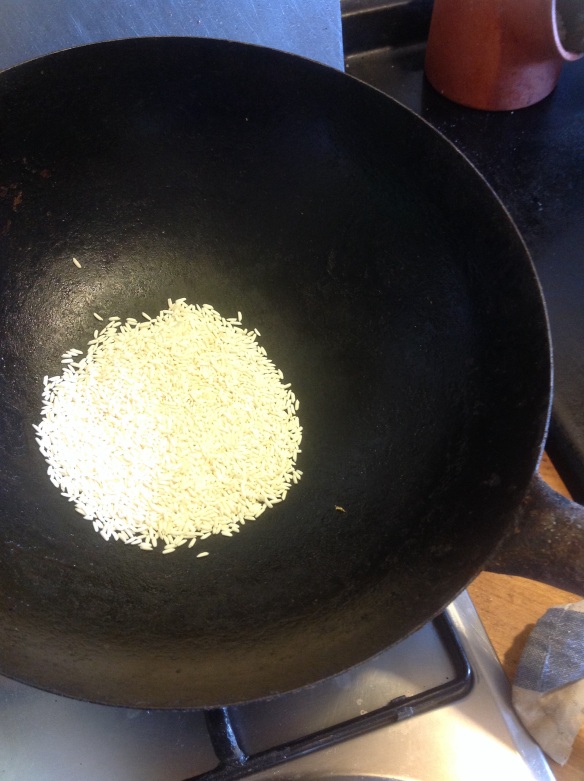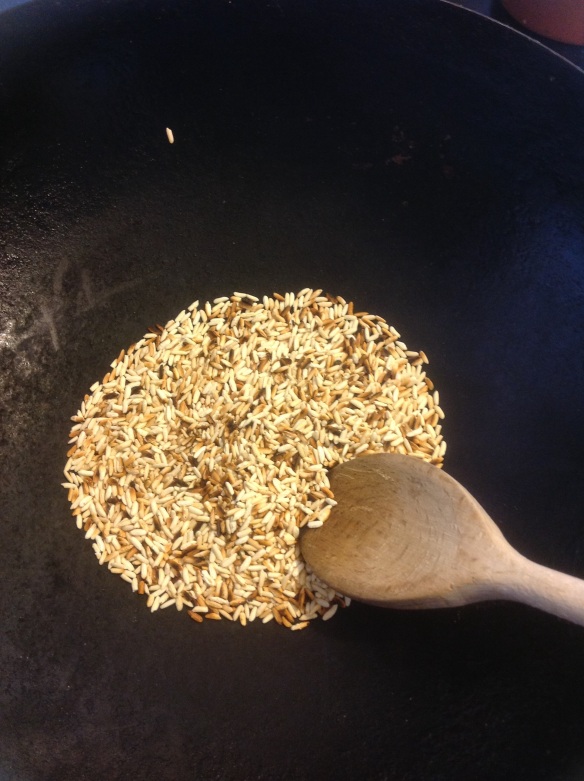
The Pak Houay Mixay Restaurant lay in a quiet street off the Mekong River road and was shaded by trees strung with coloured fairy lights. Paper stars swung in the breeze above a picket-fenced verandah enclosing a few check-clothed tables scattered amongst pots of lavish flowers.
Mrs. Misaiphon, the owner, was a renowned cook that my friend Vandara took me to meet. She was an imposing woman, heavily bejewelled and with a white badger-stripe in her hair. She had a big laugh, gravelly voice, and she laid her expensive patent-leather handbag on the table between us like a trophy. She once ran a successful jewellery store but gave it to her sister when she got bored sitting in the shop all day. Her family thought she was mad to start a restaurant in her middle age but now it was so successful they all worked for her in rotation. Last time I was in Laos, the restaurant had moved and doubled in size.
Mrs Misaipon was keen to show me a recipe that I could make at home with easily available ingrecients. She generously invited me into her kitchen and taught me me how to make a Luang Prabang snakehead fish stew (monk fish works well too) flavoured with seared aubergines and dill. She told me, “For you this does not have rare ingredients. You can make at home simple with fish or with chicken, of course it will not be quite Luang Prabang but good too”.
Here is the chicken version and, yes, it is easy to make at home. The seared aubergines give it that smokey flavour so prevalent in Lao cooking. You will need a saucepan, a wok, a live flame and a steamer (or you can steam over your sticky rice steamer, as I do).
Ingredients
1 litre of home made chicken stock flavoured with lemon grass
2 tbsps of peanut oil or sunflower oil
1 head of garlic, sliced
5 shallots, chopped roughly
10 small aubergines (golf-ball sized purple & white in colour)
1 green birdseye chilli, chopped fine
4 chicken breasts with skin, cut into large pieces, or cut a whole chicken into 8 pieces with the bones
2 tablespoons of fish sauce to taste
1 handful of fresh dill, chopped roughly
Method
1.Place the chicken stock in a pan. Add a stalk of lemongrass bent and tied in a loose knot to release the flavour. Bring the chicken stock to a simmer and keep it going on a low heat on the heat. (If you are in a hurry, you can use ready made chicken stock and simmer it a couple of lemongrass stalks for half an hour or so, but remember most Western chicken stock cubes, vac-pacs and powders are flavoured with mediterranean herbs and they will taint the flavour.
2. Fry the chopped garlic, chilli and shallots together in a wok until the shallots are soft and translucent. Remove with a slotted spoon and set aside.
3. Remove the stalks and sear the aubergines over a flame or BBQ until they are charcoal black all over. Remove the burnt skin.
4. Steam the aubergines to soften, for about 10 minutes.
5. Meanwhile, place the chicken pieces in a hot wok with the remains of the oil in which you fried the chilli, garlic and shallots. Using tongs to turn the pieces, brown the chicken until golden. Remove with a slotted spoon and add to the simmering stock pot. Lower the heat right down and keep the wok going, add a little oil if you need to.
6. Now pound the steamed aubergines in a pestle and mortar together with the fried chilli, garlic and shallots until well melded.
7. Take the aubergine mixture and quickly toss it in a hot wok and then add this to the chicken pan. Raise the heat under the saucepan pan and cook the chicken through.
8. When ready, check for saltiness, add fish sauce to your taste and throw in the chopped dill. A bit of fragrant basil doesn’t go amiss either but pure dill is good. Serve with sticky rice.





